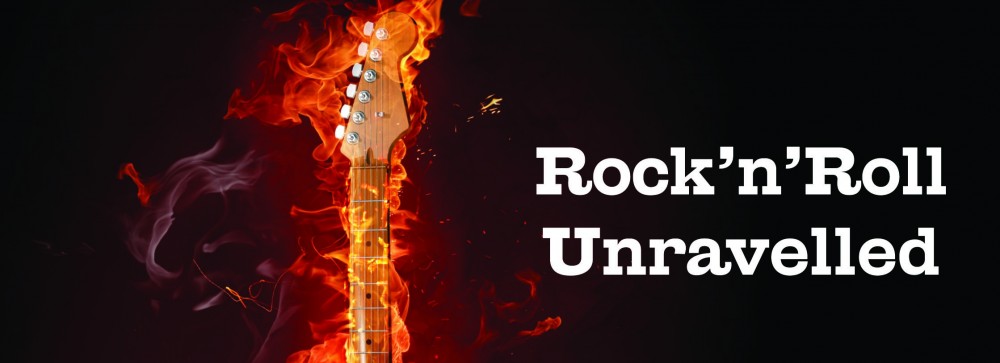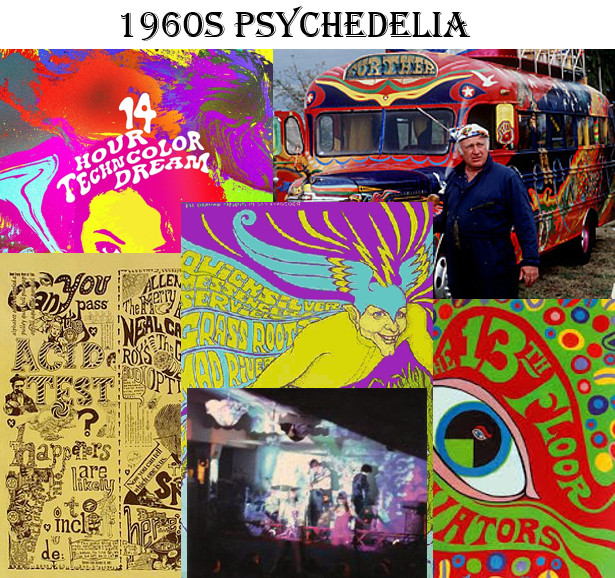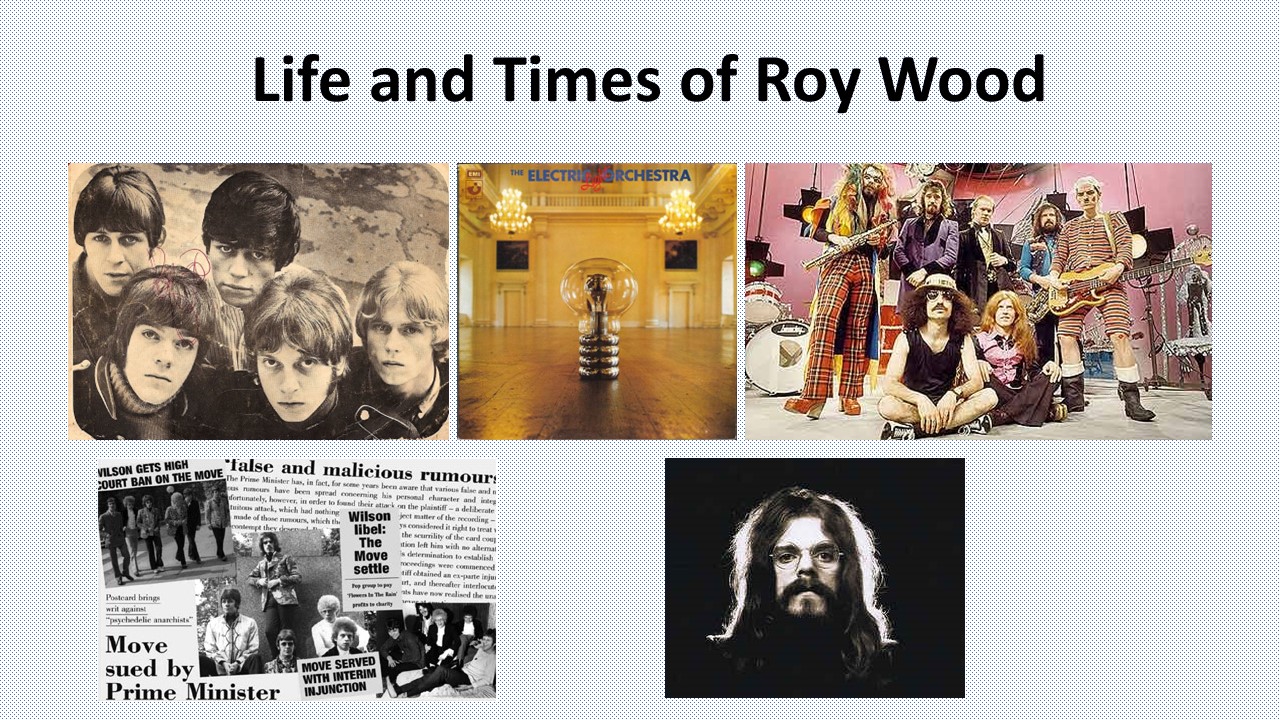1960s Psychedelia 2
One of rock music’s earliest sub-genres. Psychedelia started in 1965 and was music replicating the effects of hallucinogenic drugs – 1960s Psychedelia 2.
Bands and Artists on Tour
Check 1960s 1970s artist touring now to see which artists and bands mentioned in the article are on tour now.
At the time of writing, the following artists and bands were on tour.
For details of the tour venues and dates
Strawberry Alarm Clock
Thirteenth Floor Elevators’ – Roky Erickson
Pink Floyd’s – Nick Mason and Roger Waters
The Byrds’ – Roger McGuinn, Chris Hillman and David Crosby
The Beatles’ – Paul McCartney
Jefferson Airplane’s – Jefferson Starship and Electric Hot Tuna + Acoustic Hot Tuna
Arthur Brown
The Move’s – Roy Wood Rock & Roll Band
Pretty Things Includes their LAST EVER GIG
Soft Machine
Traffic’s – Steve Winwood
This blog follows the Rock’n’Roll Unravelled house style of providing dates for most of the events. This is intended as an aid, to quickly delve into more detail about any of the items in this brief outline of 1960s psychedelia.
1960s Psychedelia 2
Background
PSYCHEDELIC MUSIC
Psychedelic music looked to replicate the hallucinogenic experience. In concerts, the live music was enhanced with light shows and playing movies playing behind the band. These were often black and white clips from the silent movie era.
Author: Michael Hicks – suggested that psychedelic music contains three elements
Dechronicisation – move outside the conventional perceptions of time.
Depersonalisation – lose the self and gain an awareness of “undifferentiated unity”.
Dynamisation – makes everything seem to bend as, familiar forms dissolve into moving, dancing structures.
There were differences between UK and US psychedelia:
UK psychedelia – more about effects, changing time signatures, whimsical lyrics, keyboards and distorted guitars.
US psychedelia was more blues based and less focussed on whimsy.
1965 to 1968: Classic Era of Psychedelic Rock
By the late 1960s the hits were over – by the early 1970 the psych bands were history…
It was also the first age of teenage counterculture.
1938: First synthesised.
LSD-25, lysergic acid diethylamide, was synthesised by Albert Hofmann.
1956: The term “psychedelic” was coined.
It was first used by British psychiatrist Humphrey Osmond in a letter to Aldous Huxley, as a synonym for hallucinogenic drugs.
Psychedelic music – looked to replicate the hallucinogenic experience.
1959: Ken Kesey took part in the CIA funded LSD experimental programme.
Ken Kesey was at Stamford University in 1959. He also worked part-time in Menlo Park Veterans Hospital, where LSD experiments were being carried out to study the effects of psychoactive drugs. He used this background information for his classic novel One Flew Over the Cuckoo’s Nest.
1960s Psychedelia 2
Rise of Psychedelia
May 1960: 1st record to reference LSD.
The Gamblers (Los Angeles) released Moon Dawg! c/w LSD-25 – both instrumentals.
Lineup included:
Elliot Ingber – guitar 1st lineup of the Mothers of Invention
Bruce Johnston – piano Beach Boys
Larry Taylor – bass Canned Heat
early 1964: Early song reference to “psychedelic”.
The Holy Modal Rounders recorded – eponymous 1st album contained the track, Hesitation Blues. “psychedelic feet in my psychedelic shoes…got the psychedelic blues”
Poets and beat writers, Peter Stampfel and Steve Weber came together in mid-1963 in New York. The duo provided a unique blend of folk and country music, tinged with beat poetry.
After their second album, The Holy Modal Rounders 2, the duo joined poets Tuli Kupferberg and Ed Sanders, and became the Fugs.
BEAT WRITERS
1964: Ken Kesey and his Merry Pranksters embarked on their trip across America in their bus they named Further. It was intended to be a movie and was released several decades later.
May 1965: Allen Ginsberg in London reading at Better Books in London.
The 1950s beat writers and poets were an integral part of the 1960s hippie scene and the growth of psychedelic music.
Allen Ginsberg gave the first reading of his beat poem Howl on 7 October 1955, at the Six Gallery in San Francisco. The publisher was sued for obscenity in 1957. At the trial, Judge Clayton W. Horn quoted the motto of the English Order of the Garter, “Evil to him who evil thinks”.
11 Jun 1965 Allen Ginsberg at Royal Albert Hall – International Poetry Incarnation.
One of the 1st British Happenings – meeting of Beatniks and the emerging Hippy culture.
ONE OF THE FIRST PSYCHEDELIC DANCEHALLS OPENED
21 Jun 1965: The Charlatans started their residency on the opening night at the Red Dog Saloon in Virginia City, Nevada. They were the venue’s first house band. A proto-hippie band and trailblazers for what became San Francisco scene.
Dan Hicks left the Charlatans in 1968 to concentrate on his own Hot Licks band. The Red Dog Saloon was one of the 1st psychedelic dancehalls and is still going strong to this day. In 1966 Big Brother and the Holding Company became the house band.
EARLY UK SINGLES – HINTING AT PSYCHEDELIA
30 Jul 1965: The Kinks released See My Friends.
1 Oct 1965: The Yardbirds released Evil Hearted You – generally considered to be one of the1st psychedelic sounding British pop songs.
1st ACID TEST
27 Nov 1965: Ken Kesey and His Merry Pranksters hosted the 1st Acid Test event at Santa Cruz. The event often referred to as the birth of psychedelic rock. Spiked orange juice called Electric Kool Aid was on sale. The Warlocks played at this Acid Test shortly before changing their name to the Grateful Dead. The Dead were regular performers at subsequent Acid Tests.
AMERICAN PSYCHEDELIA ON THE HORIZON
late 1964: Quicksilver Messenger Service formed in San Francisco. Founding members included guitarist John Cipollina and bassist David Freiberg.
13 Jan 1966: Velvet Underground’s 1st gig with Nico, as a part of Andy Warhol’s multi-media experience – Exploding Plastic Inevitable.
1960s Psychedelia 2
Golden Age
FIRST ALL-OUT PSYCHEDELIC BAND
10 Feb 1966: 13th Floor Elevators were described as “Psychedelic Rock” in a review, after appearing at the New Orleans Club in Austin, Texas. The Austin Statesman reviewed the gig and the resulting headline, “Unique Elevators Shine With ‘Psychedelic Rock”, was one of the earliest press references to a band being described as “psychedelic”.
Oct 1966: Released their 1st album, The Psychedelic Sounds of the 13th Floor Elevators. In the summer of 1966 the band offered Janis Joplin the opportunity to join them as lead vocalist. She declined, moved to San Francisco and joined Big Brother and the Holding Company instead.
early 1966: Started out as the Sanctions in early 1965, became Jim and the Lords in late 1965/1966, the band finally settled on the name “The Electric Prunes” around this time.
1966 May: Electric Prunes released their 1st single, Ain’t It Hard, although it failed to find any commercial success.
Mid-1966: Three Sixpence – released their 1st single, Long Days Care. Ed King joined the band before they morphed into Strawberry Alarm Clock.
BRITISH PSYCHEDELIA WAS ON THE HORIZON
13 Mar 1966: Pink Floyd played at the Spontaneous Underground for the 1st time. This was a regular Sunday night gig at the Marquee club in London.
mid-1966: Incredible String Band released their 1st album, The Incredible String Band – Mike Heron, Robin Williamson and Clive Palmer.
MAINSTREAM BANDS STARTED EXPERIMENTING WITH PSYCHEDELIA
18 Jul 1966: The Byrds released their 3rd album, Fifth Dimension – it included the track Eight Miles High. This is often referred to as the 1st psychedelic record
6 Aug 1966: The Beatles released Revolver – it included Tomorrow Never Knows.
PSYCHEDELIA WAS COMING OF AGE + UK COUNTERCULTURE
Oct 1966: Gig to launch the International Times at the Roundhouse, founded by John “Hoppy” Hopkins. This was the UK’s 1st underground newspaper. The gig was attended by around 2,500 people.
9 Nov 1967: The 1st issue of Rolling Stone magazine hit the streets.
14 Oct 1966: Pink Floyd’s 1st “underground” performance, with psychedelic effects and mixed media.
1966 Nov: The Electric Prunes released I Had Too Much to Dream Last Night. It gave them their first hit on both sides of the Atlantic: US #11 and UK #49.
They only scored one more hit single – Get Me to The World on Time in 1967: US #27 in April and UK #42 in May.
23 Dec 1966: UFO, the 1st psychedelic club opened in Tottenham Court Road, London; founded by Joe Boyd + Hoppy Hopkins.
SUMMER OF LOVE
14 Jan 1967: Billed as Pow-Wow: A Gathering of The Tribes Human Be-In, this happening was held in Golden Gate Park, San Francisco. Haight-Ashbury become the centre of the hippy universe. The event was inspired by new law banning LSD – effective from 6 October 1966. The day brought the beat generation and hippie culture together; featuring beat poet Allen Ginsberg, LSD guru Timothy Leary and counter-culture figure Jerry Rubin, with music from Grateful Dead, Quicksilver Messenger Service and Jefferson Airplane.
1967: Timothy Leary released the album – Turn On, Tune in, Drop Out.
1 Feb 1967: Jefferson Airplane released their 2nd album, Surrealistic Pillow – it included White Rabbit and Somebody to Love.
10 Feb 1967: British group the Smoke released My Friend Jack – “My friend Jack likes sugar lumps…”
10 Mar 1967: Pink Floyd released their 1st single, Arnold Layne – written by Syd Barrett and produced by Joe Boyd
17 Mar 1967: Jimi Hendrix Experience released their 2nd UK single, Purple Haze – written by Jimi Hendrix. It was the 1st-ever single released on Track Records.
29 Apr 1967: 14-Hour Technicolor Dream, the infamous British freak-out at Alexandra Palace, London, attended by an estimated 10,000 people. The International Times was facing prosecution and needed money for its defence. The flier at the time described it as – “London’s Own Hip Newspaper the International Times Presents Giant Benefit 14-Hour Technicolor Dream, 30 Top Groups, Kaleidoscopic Colour, Beautiful People … Followed by Free BE-IN on Sunday … Tickets £1”.
The two-stage, mixed media happening offered a mixture of light shows, music and poetry. The bands and artists included: Pink Floyd (with Syd Barrett), The Crazy World of Arthur Brown, The Move, Alexis Korner, Graham Bond, Yoko Ono, The Pretty Things, Soft Machine, John’s Children (featuring guitarist Marc Bolan) and The Creation.
Pink Floyd were reported as delivering their set as dawn broke…
PSYCHEDELIA PICKED UP A HEAD OF STEAM
May 1967: Traffic released Paper Sun.
12 May 1967: Tomorrow released My White Bicycle. They had previously been known as the In Crowd but changed their name to “Tomorrow” at the end of 1965. Guitarist Steve Howe went on to join Yes and drummer Twink joined Pretty Things in time for their 1968 album SF Sorrow; he went on to form Pink Fairies.
April 1967: Three Sixpence released Birdman of Alkatrash c/w Incense and Peppermints, their 5th single on the All American label.
19 May 1967: Strawberry Alarm Clock released Incense and Peppermints c/w The Birdman of Alkatrash. This was their 1st release on the Uni label, with the A & B-sides flipped after the earlier release as Three Sixpence. The single gave them their 1st American hit single, a #1. They had one more American hit single, Tomorrow, in January 1968, #23. Chart success eluded them in the UK.
1 Jun 1967: The Beatles released Sgt Pepper’s Lonely Hearts Club Band in the UK.
2 Jun 1967: The Beatles released Sgt Pepper’s Lonely Hearts Club Band in America
24 Jul 1967: Full-page Legalise Pot advertisement in the British newspaper The Times. It was funded by the Beatles as a response to the jailing of John Hoppy Hopkins.
5 Aug 1967: Pink Floyd released their 1st album, Piper at the Gates of Dawn. Syd Barrett wrote most of it and took the album’s title from the title of Chapter 7 of one of his favourite books, Wind in the Willows by Kenneth Grahame.
The track Chapter 24 was inspired by the 5,000-year-old Chinese tome, I Ching: The Book of Changes. Syd Barrett designed the rear cover. The album was produced by Norman Smith, Beatles engineer from Love Me Do to Rubber Soul. As Hurricane Smith he found his own chart success in the UK and America in 1972 with Oh Babe What Would You Say.
23 Sep 1967: Tyrannosaurus Rex made their live debit at London’s Middle Earth club. The psychedelic-folk duo of Marc Bolan and percussionist Steve Peregrine Took were not well received initially but found a champion in DJ John Peel.
1960s Psychedelia 2
Decline of 1960s Psychedelia
THE BEGINNING OF THE END
6 Oct 1967: UFO club closed its doors.
6 Oct 1967: The residents of San Francisco’s Haight-Ashbury district organised the Death of Hippie march. The hippie movement started with high ideals but became polluted by outsiders. The march was a mock funeral, with a coffin for the imaginary character “Hippie”. Sadly, killed off by overexposure and rampant commercialism. The original values had been hijacked by hip-capitalists – hippie ideals were now big business.
Frank Zappa famously parodied the Beatles’ album cover collage for Sgt Pepper with his own collage for We’re Only in It for the Money. Don Henley bemoaned the past with his line from Boys of Summer – “Out on the road today I saw a Dead-Head sticker on a Cadillac. Don’t look back, you can never look back…”
Oct 1967: British music magazine Melody Maker ran the article, Who Killed Flower Power?
1960s Psychedelia 2
STILL SOME GREAT RELEASES
Nov 1967: Love released their 3rd album, Forever Changes. Mojo magazine put it as #2 best psychedelic album ever.
Nov 1967: Cream released their 2nd album, Disraeli Gears – it included Sunshine of Your Love.
Dec 1967: Traffic released their 1st album, Mr Fantasy. The track listing was different for its American release. It also had a change of title to Heaven is in Your Mind.
Dec 1967: The Rolling Stones released Their Satanic Majesties Request. The 1st Stones album to receive a mixed reception from fans and critics alike.
Apr 1968: Tyrannosaurus Rex released their 1st single, Debora.
May 1968: Quicksilver Messenger Service finally released their 1st, eponymous, album.
PSYCHEDELIA STARTED TO BURN OUT
Mid-1968: The Electric Prunes split up.
24 Oct 1968: LSD was made illegal across America, after the Staggers-Dodd Bill.
1969: The Charlatans split up.
1969: Roky Erickson pleaded insanity to avoid a jail sentence when he was caught with one joint. He was committed from 1969 to 1972. This essentially marked the end of the 13th Floor Elevators.
1972: Ed King joined Lynyrd Skynyrd – he left Strawberry Alarm Clock in 1971. The Strawberry Alarm Clock fell apart in the early 1970s.
1972: Quicksilver Messenger Service split up.
One of rock music’s first sub-genres was over…


